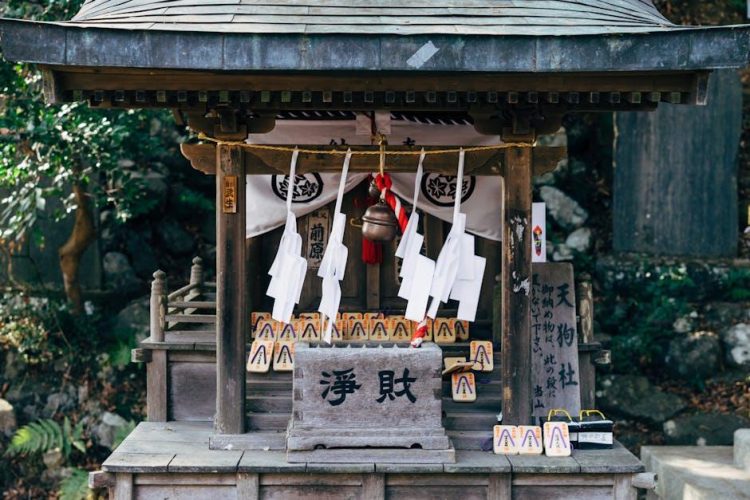Welcome one and all to the wonderfully wacky world of cultural exploration! In this article, we’ll dive into the murky waters of cultural boundaries – a realm where the line between appreciation and appropriation is as thin as a slice of avocado toast at a hipster brunch spot. So fasten your seatbelts, grab your cultural guidebook, and get ready to embark on a journey through the tangled jungle of cross-cultural understanding. Let’s see if we can navigate this minefield with grace, humor, and a healthy dose of self-awareness. Let the adventure begin!
Navigating Cultural Exchange
When embarking on a cultural exchange, it’s important to remember that you are stepping into unfamiliar territory. However, this doesn’t mean you have to feel like a fish out of water. With a few handy tips and tricks, you can navigate the twists and turns of cultural exchange like a seasoned pro.
First and foremost, embrace the art of communication. Whether it’s mastering the local language or simply learning a few key phrases, effective communication is key to building bridges with your new cultural counterparts. Remember, a smile is a universal language!
Next, don’t be afraid to step outside of your comfort zone. Trying new things is all part of the cultural exchange experience. So go ahead, sample that exotic dish or participate in that traditional dance. Who knows, you might just discover a hidden talent!
Lastly, keep an open mind. Cultural exchange is all about embracing diversity and learning from one another. So be open to new ideas, perspectives, and experiences. After all, variety is the spice of life!
Understanding the Difference Between Appreciation and Appropriation
So, you think you know the difference between appreciation and appropriation? Well, buckle up because we’re about to dive into the confusing world of cultural borrowing!
Appreciation:
- When you genuinely admire and respect a culture and its traditions.
- It involves learning about the culture, engaging with its practices, and showing gratitude for its contributions.
- Appreciation is like giving your neighbor’s homemade lasagna a thumbs up and asking for the recipe.
Appropriation:
- When you take elements from a culture without understanding or respecting the significance behind them.
- It often involves using these elements for personal gain or trendiness without giving credit to the originating culture.
- Appropriation is like claiming you invented the lasagna and profiting off of it without acknowledging its true maker.
So, next time you’re tempted to rock a headdress at Coachella or sport a bindi just for fun, ask yourself: Are you appreciating or appropriating? Remember, cultural appreciation is cool, but cultural appropriation is just not a good look. Stay woke, folks!

Examples of Cultural Appropriation in Modern Society
Let’s dive into some eye-roll inducing that will make you want to facepalm into oblivion.
First up, we have the trend of wearing bindis as a fashion statement. Because nothing screams cultural ignorance like slapping a sacred Hindu symbol on your forehead just to look “exotic” at Coachella. It’s like saying, “I have no idea what this means, but it looks cute on me, so who cares?” eye roll
Next, we have the oh-so-trendy “tribal” tattoos that people get because they think it makes them look edgy and unique. Newsflash: there’s nothing edgy or unique about appropriating indigenous tribal designs without understanding their cultural significance. It’s like playing dress-up with someone else’s heritage. facepalm
And let’s not forget about the appropriation of traditional Native American headdresses at music festivals. Because nothing says “I have no respect for indigenous cultures” quite like wearing a headdress made of feathers that symbolize honor and respect in Native American traditions as a fashion accessory. Seriously, can we leave the headdresses where they belong and stick to flower crowns instead? double facepalm

The Impact of Cultural Appropriation on Marginalized Communities
Cultural appropriation is like that annoying neighbor who constantly borrows your stuff without asking, but on a global scale. It’s when a dominant group steals elements of a marginalized community’s culture without understanding or respecting its significance. This can range from wearing traditional clothing as a trendy fashion statement to using sacred symbols for profit.
For marginalized communities, cultural appropriation isn’t just a case of someone stealing their thunder - it’s a violation of their identity and heritage. It contributes to a long history of erasure and devaluation of their culture, reinforcing power imbalances and perpetuating harmful stereotypes. It’s like inviting someone to a potluck and they show up empty-handed, munching on your grandma’s famous potato salad like they made it themselves.
When privileged groups appropriate elements of marginalized cultures, they often profit from it while the original creators are marginalized even further. It’s like a bad game of Monopoly, where one player gets to build hotels on Park Place while the others are stuck paying rent on Baltic Avenue. This not only perpetuates inequalities but also devalues the cultural significance of these practices, reducing them to mere commodities.
It’s essential for us to be mindful of the impact of cultural appropriation and strive to celebrate diversity without exploiting or appropriating it. Let’s tread lightly, respect each other’s cultures, and remember that embracing diversity is about lifting each other up, not stepping on someone else’s toes in the process.

Effective Ways to Appreciate and Respect Other Cultures
One way to show appreciation for other cultures is by trying their traditional foods. Take a culinary trip around the world and try dishes like sushi from Japan, tacos from Mexico, or paella from Spain. Who knows, you might discover a new favorite dish!
Another fun way to respect other cultures is by learning about their traditions and holidays. Attend cultural festivals, participate in traditional ceremonies, or even learn a few words in a different language. It’s a great way to broaden your horizons and show respect for the diversity around you.
Traveling to different countries is a fantastic way to immerse yourself in a new culture. Stay in local accommodations, visit historical sites, and interact with the locals. You’ll gain a deeper understanding and appreciation for the traditions and customs of the people you meet.
Finally, one of the most important ways to appreciate and respect other cultures is by listening with an open mind. Engage in conversations with people from different backgrounds, ask questions, and truly listen to their stories. Embrace the differences and celebrate the unique aspects of each culture you encounter.
Challenges in Addressing Cultural Appropriation in a Globalized World
In a world where fashion trends spread faster than you can say “cultural appropriation,” addressing this issue can feel like trying to catch a greased pig at a county fair. The challenges are aplenty, but here are a few that stand out:
One major hurdle is the slippery slope of defining what actually constitutes cultural appropriation. Is it borrowing a hairstyle? Sporting a traditional garment? Serving up fusion cuisine? It’s as murky as a swamp on a foggy day. One person’s homage is another person’s insult, so navigating these murky waters can feel like tiptoeing through a minefield in stiletto heels.
Another challenge is the global nature of cultural exchange in the digital age. With influencers and celebrities setting trends like dominoes falling in a synchronized routine, it’s hard to pinpoint where cultural appreciation ends and exploitation begins. Add in the internet’s ability to amplify and distort messages at lightning speed, and you’ve got a recipe for a cultural appropriation disaster soufflé.
And let’s not forget the ever-present issue of privilege. Those who hold power and influence often get a free pass when it comes to appropriating cultures, while marginalized communities are left picking up the pieces of their stolen heritage. It’s like a game of Monopoly where some players start with hotels on Park Place and others are stuck languishing in Baltic Avenue poverty.
FAQs
Can I wear a traditional cultural garment just for fun?
Absolutely not! That’s like wearing a Halloween costume every day of the year. Show some respect and only wear traditional cultural garments when appropriate and with full appreciation for their significance.
What if I want to share my love for a certain culture through art or music?
Now we’re talking! Sharing your passion for a culture through creative expression is a great way to show appreciation. Just make sure you do your research and give credit where credit is due.
Is it okay to cook traditional dishes from other cultures?
Cooking up a storm in the kitchen from different cultures is a delicious way to appreciate diversity. Just remember to do so with respect for the origins of the recipe and the traditional ingredients used.
What’s the difference between appreciation and appropriation?
Appreciation is like admiring a beautiful piece of art in a museum, while appropriation is like stealing that piece of art and claiming it as your own. It’s all about intention and respect.
How can I navigate cultural boundaries without causing harm?
Educate yourself, ask questions, listen to feedback, and always approach other cultures with an open heart and mind. Treat others’ traditions and customs with the same care and respect you would want for your own.
—
In Conclusion: Navigating the Treacherous Waters of Culture
And that, my friends, is the ins and outs of exploring cultural boundaries. Remember, it’s all fun and games until someone gets accused of cultural appropriation! So tread carefully, appreciate with caution, and never forget that imitation is not always the sincerest form of flattery. Stay curious, stay respectful, and above all, stay fabulous! Until next time, happy exploring!






